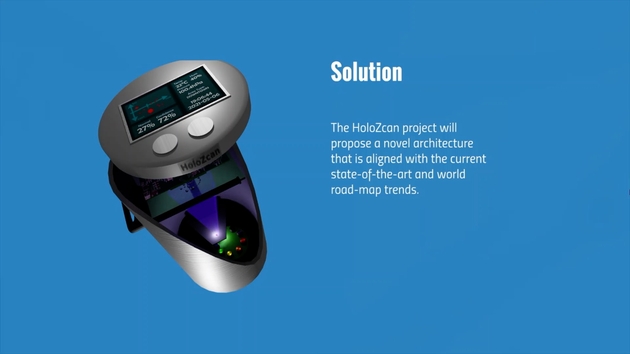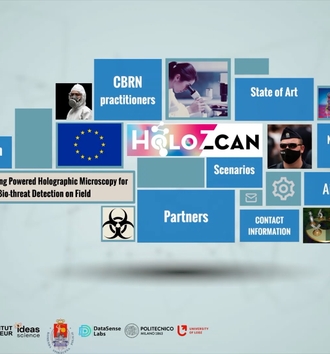What are biological hazards?
These are organisms or substances of organic origin (viruses, bacteria, toxins) which, if stored improperly (e.g., in laboratories) or at significant concentrations, can be dangerous to human and animal health or life.
Biohazards can be used on purpose, e.g., by terrorist groups or – as in the case of the spread of infectious diseases among event participants – appear in large facilities without the intention of infecting others.
In every residential building, public transport or public place (e.g., stadium, arena) procedures to be followed in case of fire are known. However, it is not known how to react when someone infected with a dangerous disease appears in such places. This is illustrated by the example of last year's Champions League match Atalanta-Valencia, when the biological agent COVID-19 caused the spread of an epidemic among the participants of one event. Time is of the essence in such cases!
HoloZcan is a solution
The device will be useful for all actors dealing with security – police, military, humanitarian aid workers, disaster and crisis management managers, people in charge of public safety and critical infrastructure.
The services need a device that will improve their operations in the field, where every second counts. Thanks to this, the possibilities of detecting and measuring biological agents will increase by developing an automatic and portable system for their detection, which also enables their automatic classification.
dr Marcin Niemcewicz, the project leader at the University of Lodz
How does it work?
The device is based on holographic microscopy technology, which enables depth of field and allows for high-speed 3D imaging. In short, imaging is based on splitting the laser beam into two components: a signal beam (falling directly on the item being imaged) and a reference beam.
The resulting reference hologram will allow you to bypass the bacterial staining process. Images of both bacteria and the most common pollutants (dust, pollen, etc.), prepared using light microscopy, will be introduced into the device's software. It will be the so-called device learning process. A database of bacteria and pollutants will also be created.
Ultimately, the device will in practice be able to distinguish the type of bacteria and distinguish them from the most common microscopic contaminants on the basis of a database and appropriate algorithms, such as the shape and size of bacteria.
The results will be obtained within 5-10 minutes, which will considerably shorten and simplify the process of detection of pathogens by emergency response services and other entities dealing with general biosafety issues.
dr Marcin Niemcewicz, the project leader at the University of Lodz
About the HoloZcan project
The full name of the project is Deep Learning Powered Holographic Microscopy for Biothreat Detection on Field .
This is a new project, funded by the European Union under the Horizon 2020 programme that the University of Lodz is involved in. An amount of EUR 4 380 400 was obtained for the realization of the project, of which EUR 611 500 constitutes the budget of the University of Lodz.The Faculty of Biology and Environmental Protection, UL thanks to the existence of the UL Biohazard Prevention Centre for years has been working with services and institutions from all over the world that operate in the area of facility safety. The project started in June 2021 and it will last 36 months.
9 institutions cooperate within the Consortium:
- Scientific institutions (University of Lodz, Politecnico di Milano from Italy and the Pasteur Institute from France),
- Experts in the field (IDEAS Science from Hungary, DataSenseLabs from Hungary, Sioux-CCM BV from the Netherlands, DMI Associates from France, ZugMedical System SAS from France),
- potential target recipients (Warsaw Police Headquarters).
The project is divided into 6 working packages, such as:
- Project management,
- Biohazard classification system development,
- Bio sampling and system maintenance,
- Integration, adjustment, calibration and validation of the instrumentation,
- Users’ engagement, dissemination, exploitation and training,
- Ethics.
University of Lodz is engaged in the implementation of all 6 working packages, and in particular leads the tasks in packages 2 and 3, specifically:
- 2.1: Investigation of the current status of bio-detection and setting up the project infrastructure,
- 2.3: Build databases for biological and physical nanoparticles,
- 3.1 Design a sampling strategy.
Moreover, representatives of the University of Lodz are members of the Committee for Classified Information and Ethical Issues established in the project. The end result of the project will be a prototype at the 6th level of technological readiness.
Up-to-date information on the progress of work within the project is available on LinkedIn and Twitter
Source: The UL Biohazard Prevention Centre;
Edit: Promotion Centre, UL



